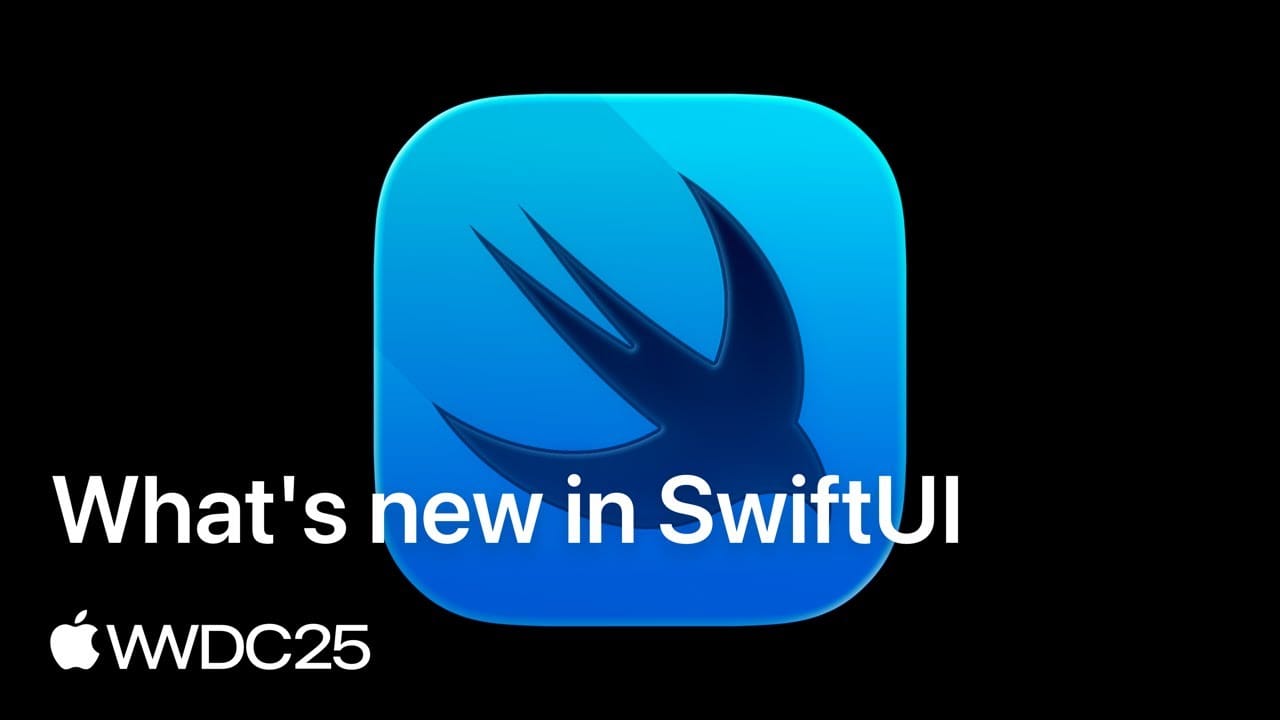WWDC25: Meet the Foundation Models Framework | Apple
Discover Apple’s Foundation Models framework, enabling powerful on-device large language models across macOS, iOS, iPadOS, and VisionOS with privacy-first, efficient AI integration for developers.
Discover the latest SwiftUI features from WWDC25, including Liquid Glass design, performance enhancements, 3D layouts, rich text editing, and web content integration.


SwiftUI continues its evolution as an essential framework for building exceptional apps across all Apple platforms. The latest updates unveiled by Apple Developer at WWDC25 refresh the framework’s design capabilities, performance, and versatility, empowering developers to create more immersive, adaptive, and visually stunning experiences. This article distills the key innovations shared during the presentation, offering a deep dive into the transformative features and enhancements that SwiftUI now brings to the table.
One of the most captivating highlights is the introduction of the Liquid Glass design language. This approach infuses SwiftUI apps with a fresh, modern aesthetic that emphasizes clarity, depth, and fluidity. Liquid Glass enhances user interfaces by leveraging translucency, subtle blurs, and layered effects that simulate the properties of liquid glass surfaces. This results in interfaces that feel alive and tactile, inviting users to engage more deeply with content.
Developers can now apply Liquid Glass effects not just to standard UI components but also to custom views, expanding creative possibilities. The framework provides new APIs that facilitate the integration of these effects seamlessly, ensuring apps retain high performance while embracing this sophisticated visual style. This marks a significant leap forward in design expressiveness, enabling apps to stand out with elegance and polish.
From a developer’s perspective, Liquid Glass is not merely about aesthetics—it also aligns with Apple’s Human Interface Guidelines, promoting interfaces that are both beautiful and accessible. The translucency and layering can be fine-tuned to maintain readability and contrast, ensuring inclusivity for users with different needs.
Beyond visual design, the SwiftUI framework itself has undergone foundational improvements aimed at boosting app performance and developer productivity. These enhancements include optimizations in rendering, layout computation, and state management, which collectively reduce resource consumption and improve responsiveness.
New instruments introduced alongside SwiftUI provide developers with deeper insights into app performance. These tools enable precise profiling of SwiftUI views and animations, helping identify bottlenecks and optimize rendering pipelines. This focus on performance ensures that apps built with SwiftUI can scale smoothly from simple utilities to complex, graphics-intensive applications.
The framework continues to embrace Swift concurrency, allowing developers to write asynchronous code more naturally. This results in smoother UI updates and better handling of background tasks without compromising user experience. The integration of concurrency features within SwiftUI accelerates the development of responsive, modern apps.
SwiftUI’s reach now spans even more areas within the Apple ecosystem. The framework’s capabilities are being extended to support advanced use cases such as web content integration and rich text editing directly within SwiftUI views. This expansion opens new doors for developers to embed dynamic content like interactive web pages or formatted documents seamlessly within their apps.
Moreover, SwiftUI now supports three-dimensional layouts, enabling developers to create immersive spatial interfaces. This is particularly exciting for visionOS and RealityKit integration, where 3D spatial layouts and augmented reality experiences become essential. SwiftUI’s spatial layout system simplifies the development of these complex interfaces by providing declarative APIs tailored to three-dimensional environments.
Another notable advancement is the improved adaptability of SwiftUI menus. Menus now automatically populate with controls that adjust to the platform’s context and user preferences, enhancing usability and consistency across devices.
Rich text editing and display have traditionally been challenging to implement natively in app frameworks. SwiftUI addresses this with new support for AttributedString, enabling developers to craft rich text experiences effortlessly. This includes support for multiple fonts, colors, styles, and embedded media, all declaratively controlled within SwiftUI’s view hierarchy.
In parallel, the integration of WebKit for SwiftUI allows embedding and interacting with web content natively. This capability is vital for apps that require dynamic content sourced from the web or need to present hybrid experiences combining native and web technologies. The WebKit integration is designed to be performant and secure, providing a smooth user experience without compromising app stability.
Apple has also enhanced the developer experience by providing comprehensive documentation, sample code, and video sessions to help developers adopt these new features quickly. Resources cover everything from applying Liquid Glass effects to optimizing SwiftUI performance using Instruments, as well as deep dives into concurrency and spatial layouts.
For developers eager to explore localization, accessibility, and assistive technologies, SwiftUI continues to improve support, ensuring apps built today are inclusive and ready for global audiences. The framework’s synergy with Assistive Access and other accessibility tools underlines Apple’s commitment to creating technology that works for everyone.
Looking ahead, SwiftUI’s trajectory points toward even greater integration with Apple’s visionOS, RealityKit, and Metal rendering frameworks, promising a future where developers can build immersive, high-performance apps with ease and consistency across all form factors.
The latest SwiftUI updates unveiled at WWDC25 represent a significant leap forward in app development on Apple platforms. Liquid Glass introduces a visually stunning design language that elevates user interfaces with elegance and depth. Framework foundations have been strengthened with performance optimizations and concurrency support, enabling developers to build faster, smoother apps.
SwiftUI’s expanding ecosystem now embraces rich text editing, web content integration, and three-dimensional spatial layouts, broadening the scope of what apps can achieve. These enhancements, combined with improved developer tools and resources, position SwiftUI as the premier framework for creating modern, immersive, and accessible applications across all Apple devices.
For developers, embracing these innovations means delivering apps that not only look great but also perform exceptionally and offer rich, interactive experiences. The future of SwiftUI is bright, and the framework’s continuous evolution promises to empower developers to push the boundaries of app design and functionality.